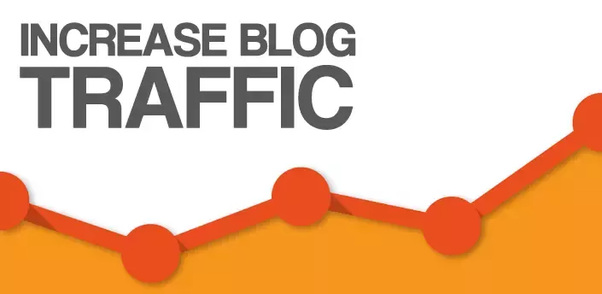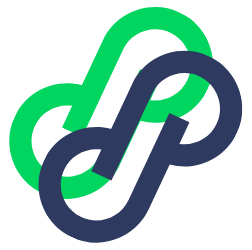How Grow your SEO Traffic by 150% – Credits to Riccardo Russo
![]() How to make a + 150% organic traffic in just 3 months!
How to make a + 150% organic traffic in just 3 months!
In this post I will explain how I increased the organic traffic on behalf of a client increasing by 150% visitors from search engines in just 3 months of activity.
![]() From 1 January 2018 – to 31 March 2018 | visits from search engines amounted to 162K.
From 1 January 2018 – to 31 March 2018 | visits from search engines amounted to 162K.
![]() From 1 April 2018 – to 30 June 2018 | visits from search engines reached 335k.
From 1 April 2018 – to 30 June 2018 | visits from search engines reached 335k.
BOOM!
The client has an online newspaper on the public administration, which on average has a monthly number of unique users of 135K.
This is a website launched in 2014 by a small team (2-4 people), excellent quality of content … but they did not have the technical skills related to the optimization of the site and the articles for search engines.
My task, therefore, was to bring in the company a series of practical skills related to SEO in order to make the internal team work in a completely independent.
I then prepared a strategy and an executive plan – all accompanied by 6h one-on-one consultancy in the company.
Ok, let’s get to the heart of the post. How was it possible to make a + 100% organic traffic in just 3 months?
![]() Publication of a pillar post (5-7K words on average) per week – it is mainly about evergreen content, ie all those contents that do not have a deadline and maintain their value intact over time.
Publication of a pillar post (5-7K words on average) per week – it is mainly about evergreen content, ie all those contents that do not have a deadline and maintain their value intact over time.
![]() Publication of 5 articles with long-tailed keywords (500-800 words) per week – the ‘long tail’ theory consists of the strategy of preferring many keywords with lower search volume (and higher conversion rate) than choosing a few words key with a high volume of research. Being able to position yourself on many keywords with low search volume will allow you to collectively generate more traffic than the positioning of generic keywords (keywords selected for post pillars).
Publication of 5 articles with long-tailed keywords (500-800 words) per week – the ‘long tail’ theory consists of the strategy of preferring many keywords with lower search volume (and higher conversion rate) than choosing a few words key with a high volume of research. Being able to position yourself on many keywords with low search volume will allow you to collectively generate more traffic than the positioning of generic keywords (keywords selected for post pillars).
The drafting of the aforementioned articles was accompanied by the application of a series of SEO measures that you will find below.
Measures that have been applied to all the new content posted (pillar, long-tail content etc) and to the 100 articles that have obtained more traffic from Google in the last 12 months, with the aim of optimizing the positioning of the latter.
![]() Optimization of URLs – going to adopt a URL that goes to contain the main keyword of a content. First, I went on Analytics, I mapped the 100 articles that got more traffic from the search engines and I manually changed the URLs from Wordpress. For each article written later the internal team did the rest.
Optimization of URLs – going to adopt a URL that goes to contain the main keyword of a content. First, I went on Analytics, I mapped the 100 articles that got more traffic from the search engines and I manually changed the URLs from Wordpress. For each article written later the internal team did the rest.
![]() Title optimization – as many of you know, the title is one of the most crucial elements for optimizing content. Each Title should not exceed 60 characters and must have the following structure: “Keyword | Domain”;
Title optimization – as many of you know, the title is one of the most crucial elements for optimizing content. Each Title should not exceed 60 characters and must have the following structure: “Keyword | Domain”;
![]() Creation of a dense network of internal link building – each content presents within it a minimum of 2 and a maximum of 4 links to another article inside the website (cross-linking) in Wikipedia style, going to optimize the title connection.
Creation of a dense network of internal link building – each content presents within it a minimum of 2 and a maximum of 4 links to another article inside the website (cross-linking) in Wikipedia style, going to optimize the title connection.
![]() Image optimization – it is good practice to insert the keywords of the content both as a title of the single images, and as ALT. For example, a gallery of 5-6 images will not present every single image with the same keyword, but the keyword will always be present but elongated, then other terms are added which, while respecting the content’s focus, expand it.
Image optimization – it is good practice to insert the keywords of the content both as a title of the single images, and as ALT. For example, a gallery of 5-6 images will not present every single image with the same keyword, but the keyword will always be present but elongated, then other terms are added which, while respecting the content’s focus, expand it.
I finally provided a series of practical tips and tricks in the company consulting session on:
![]() How to draw up an editorial calendar;
How to draw up an editorial calendar;
![]() How to find blogs / websites in which to do guest posting and how to interface with the latter;
How to find blogs / websites in which to do guest posting and how to interface with the latter;
![]() How to select a keyword on which to write a content;
How to select a keyword on which to write a content;
![]() I provided an excel tab to track the placement of every single keyword month by month and category by category.
I provided an excel tab to track the placement of every single keyword month by month and category by category.
etc etc.
I have also introduced a series of tools that totally disregarded (and maybe many of the readers of this post will sound familiar):
![]() SemRush – one of the most complete and comprehensive SEO tools. With SEMrush you can have an estimate of traffic, more fruitful queries, the positioning of your content and its competitors etc etc;
SemRush – one of the most complete and comprehensive SEO tools. With SEMrush you can have an estimate of traffic, more fruitful queries, the positioning of your content and its competitors etc etc;
![]() Open Site Explorer – link intelligence tool that has a series of metrics designed to simulate the attribution of value to sites and pages hypothetically similar to Google;
Open Site Explorer – link intelligence tool that has a series of metrics designed to simulate the attribution of value to sites and pages hypothetically similar to Google;
![]() Answer The Public – is a tool that uses the suggestion of Google to quickly provide the keywords most searched by users from a key of your interest;
Answer The Public – is a tool that uses the suggestion of Google to quickly provide the keywords most searched by users from a key of your interest;
![]() CheckPageRank – tool that allows tracking the positioning of a content on search engines.
CheckPageRank – tool that allows tracking the positioning of a content on search engines.
Well, we arrived at the end of the post.
If you would like to build this with your business – another great article to read is Top 50 Advice on how to build your startup .
![]() Moral: SEO is a very large subject (and “apparently” complex for newcomers in the sector) but as this small case study demonstrates the two components that make the difference and are able to bring success to an SEO project are the following : sensible and targeted execution (which is often, as in the case of the customer in question, neglected and overshadowed) and a lot of constancy.
Moral: SEO is a very large subject (and “apparently” complex for newcomers in the sector) but as this small case study demonstrates the two components that make the difference and are able to bring success to an SEO project are the following : sensible and targeted execution (which is often, as in the case of the customer in question, neglected and overshadowed) and a lot of constancy.

